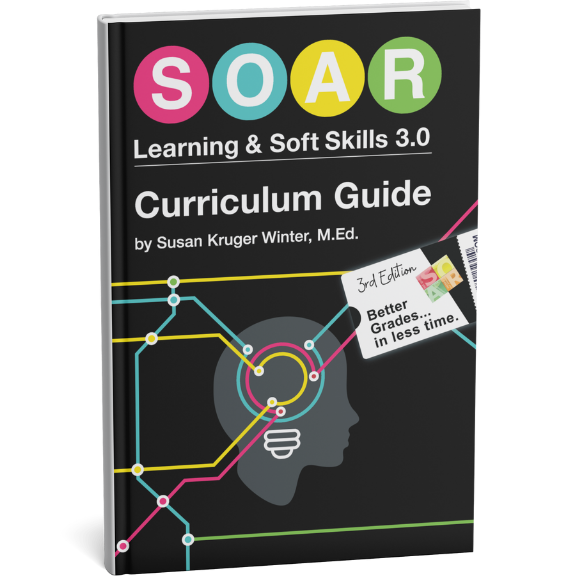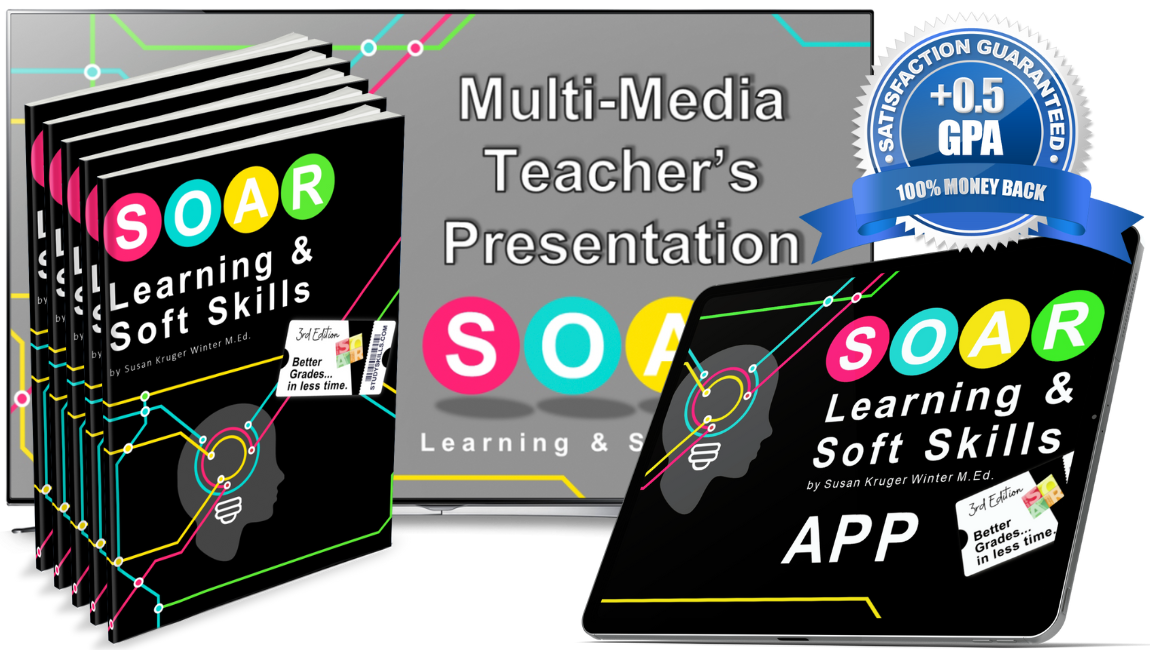From Failing to 4.0
I struggled in school. From kindergarten thru 12th grade, I struggled to earn mediocre grades. I would study for hours…then fail a test. Over time, I had no motivation to study. “Why should I bother?” I wondered.
As I entered college, I knew something would have to change. Based on my track-record, I would never survive. So, I found a couple of books on the subject of “preparing for college.”
Most of the information in these books was awkward and frustrating. A few strategies, however, were attractive. They were simple. I could easily remember them. So, I tried them.
They worked! I earned a 3.9 GPA my first semester of college. Before long, I earned a 4.0 and graduated from college with the highest honors. After 13 years of chronic struggle in school, this was a miracle!
What Made the Difference?
It turns out, the few strategies I learned were “study skills”; skills that allowed me how to learn more efficiently. After a lifetime of struggles, a few simple concepts completely transformed my experience in school. My confidence soared! I discovered I can do anything I set my mind to.
Do Study Skills Really Make THAT Much Difference?
Study skills changed my life. It turns out, I’m not alone. In 2009, Ohio State University published results from a long-term study on the effectiveness of study skills. They found that:
Students who had struggled in high school, were 45% more likely to graduate from college if they took a study skills class as a freshman.
Students who had been considered “average” in high school, were 600% more likely to graduate from college after taking a study skills class!
Employers Are DESPERATE for Study Skills!
In the workplace, these skills are known as “soft skills.” And, employers are desperate for them! In a 2008 survey, hundreds of employers in “emerging sectors” (fields that are expected to grow in the next 30 years) listed the skills they needed most. Of the top 57 skills, only four related to technology. The remaining 95% were skills such as:
- Reading comprehension (which ranked at the top of the list for every individual sector)
- Critical thinking
- Active learning
- Written expression
- Time management
- Organization
- Active listening
- Attention to detail
- Learning strategies
- Independence
…these are “study skills” and they represent 95% of the top skills in the workplace!
We Are Preparing Students for Jobs That Do Not, Yet, Exist!
Is it any wonder that employers need students to learn these study skills? Information is changing at an unprecedented pace! The top 10 in-demand jobs ten years from now…do not exist today. Employers need to hire people who can keep up with changes. They need students who can access information, organize it, recall it for later use, think critically, and manage time appropriately.
National and state education standards place all of the emphasis on content. Content is easy to test, but much of that content is already outdated. Students need to learn how to learn that content so they are prepared to learn any content.
Study Skills Are for Everyone!
Study skills level the playing field for everyone. Straight-A students appreciate learning short-cuts to make their study time more efficient. Struggling students appreciate the clarity and confidence they develop once they unlock the mystery. Even students with learning disabilities and ADHD benefit from study skills.
In fact, it wasn’t until just a few months ago (nearly 20 years after I began teaching study skills) that I learned I have ADHD and a couple of learning disabilities. This explains why I struggled through school. But it also demonstrates how powerful study skills can be in overcoming major challenges.
What Are These “Magic” Skills?
I could write a whole book on the tips and strategies that helped me go from failing to a four-point (and, actually, I have). But I’ll share a few of my favorites now:
Visual Networking for Textbook Reading
You have heard that a picture is worth a thousand words. This is much more than a cliché…the brain is hard-wired to absorb images instantaneously. Words, on the other hand, require several additional layers of processing before the brain can generate meaning. Take advantage of the brain’s natural strengths by “reading the pictures” in the text.
Reading the pictures is a three-step process:
- Look at each picture, chart, graph, and visual.
- Read the caption.
- Ask yourself, “Why do I think this picture is here?” Answer the question to the best of your ability.
The third step is the most important in this process. It forces your brain to make connections; connecting visuals with the content in the text. These connections will greatly improve reading speed and comprehension!
Take Ten
“Take Ten” is a daily, ten-minute routine that improves the two most important keys to improving grades: organization and learning. It works by using the first ten minutes of daily homework to organize papers and review notes:
- Two minutes to clean out the book bag and organize papers in folders or a binder.
- Eight minutes to review all notes and handouts that were distributed throughout the day.
This daily review transfers new information from short-term to long-term memory and dramatically reduces study time for tests. It also helps the brain process homework more efficiently, which means homework can be done faster.
Power Down
The concept of “powering down” has become one of the most eye-opening for the students in our classes! As I always tell students, “If you don’t learn how to control electronics now, they will always have control over you.” Students tell us that this sound bite sticks with them. This is the first time they have ever noticed that electronics do, in fact, run their lives.
As you might guess, the idea behind “powering down” is simply to turn off electronic distractions long enough to finish. Students think they can multi-task. In reality, their attention ping-pongs back-and-forth: Homework. Texting. Homework. TV. Homework. Music. Texting. Homework.
The brain is only capable of multi-tasking for routine activities such as walking while talking. It is not capable of multi-tasking with learning. All of these electronic distractions simply reduce efficiency and make homework take 2-4x longer.
In Conclusion…
Sadly, national K-12 curriculum does not teach students how to learn, but there are simple brain-based strategies for learning more efficiently. There is no reason why any student should be denied the ability to meet his or her best potential with these strategies. If I can go from failing to a four-point, anyone else can, too. It’s time to give students the strategies to make that happen!
-Susan Kruger
Six Steps
Conquer the Chaos
Get Our Free Guide & Information on...
 How to Organize & Motivate Students for Success
How to Organize & Motivate Students for Success
"*" indicates required fields
Get Our FREE Curriculum Guide!
The SOAR® Curriculum
The most critical learning, organizing, and communication skills needed for school. Learn more here.
Who’s Using SOAR®?
SOAR® Guarantee
Click here to learn more.




